Water descaling systems play a crucial everyday role in industries and buildings. As technology progresses, new solutions are emerging to enhance performance, sustainability, and cost-effectiveness. Staying ahead of developments helps organizations optimize operations now and in the future.
Connected Technology and Automation
Connected systems leverage the IIoT through sensors embedded throughout the descaling equipment. Flow meters, temperature probes, pressure ga,uges, and quality analyzers constantly transmit operating data via industrial gateways. This information is fed to cloud-based software platforms for centralized monitoring and control.
Machine learning algorithms analyze sensor readings and historical performance records to detect usage patterns. They can predict when components like pumps, filters, or controls may need servicing based on run hours, temperature fluctuation,s, and other risk factors. This enables proactive maintenance scheduling rather than untimely breakdowns.
Remotely accessed data and analytics empower operators to pinpoint issues in real-time. Technicians can diagnose problems virtually by overlaying sensor outputs on digital equipment models. Automated controls further optimize processes second-by-second based on changing conditions, load profiles, and optimization routines developed through AI.
Early adopters report major benefits from connected retrofits. Continuous remote oversight cuts downtime by 30-50% through automated alerts and real-time remedy guidance. Energy consumption was reduced by 15-30% due to optimized setpoints and automated adjustments. Maintenance costs fall 20-40% as tasks transition from time-based to condition-based servicing. Water treatment quality also improves an average of 15% through consistent optimized conditions. Overall, connectivity delivers significant performance gains and long-term cost savings.
Advanced Scale Detection
Traditional scale monitoring relies on visual inspection or laboratory analyses which only detect large accumulations. Advanced technologies now identify deposits at much earlier, sub-visual stages to prevent costlier repairs down the line.
Acoustic resonance analysis utilizes ultrasonic sound waves to differentiate mineral scales from base materials. As scale builds, resonant frequencies subtly shift. Monitoring these changes pinpoints problem areas invisible to the naked eye. Thermography cameras detecting slight temperature variances likewise spot deposits constricting flow before flowmeters register drops.
Nanoparticle-based tracers—microscopic tags that travel through systems—fluoresce under ultraviolet scanning where accumulations trap them. This identifies scale pockets concealed inside pipes behind the insulation. Forward-looking infrared (FLIR) thermal cameras find variances underneath external surfaces by reading heat signatures.
When networked with IIoT platforms, these techniques automate continuous remote monitoring. Embedded acoustic sensors, infrared cameras, and tracer injection systems provide 24/7 coverage without daily manual inspections. AI algorithms then analyze patterns to predict future hotspots.
For one major utility, thermography scanning detected a 5% flow restriction months before flowmeters registered the issue. Resolving it preemptively avoided a $50,000 repair job. Another plant applied tracers to locate buried underground scale, removing an emergency shutdown risk.
Early detection powered by advanced sensors improves maintenance planning. Transitioning from reactive repairs to proactive condition-based scheduling based on automated real-time readings from integrated detection systems cuts corrosion costs significantly industry-wide.
Advanced Chemical Treatments
Traditional descaling relies heavily on harsh acids and alkaline chemicals that are expensive to handle and pose environmental risks. New non-toxic formulations are gaining favor through novel mechanisms.
Some utilize physical phenomena like catalyzed hydrolysis or interaction with magnetic fields to induce mineral dissolution without chemicals. This prevents the safety and disposal issues of strong acid/base storage and use.
Other approaches employ targeted micro-dosing of less hazardous inhibitors on an as-needed basis. Sensors detect scale formation and precisely deliver just the required treatment dosage, reducing overall chemical volumes by 50-80% versus constant feed systems.
Advanced oxidation processes generate aggressive hydroxyl radicals when certain catalysts are exposed to oxidizing agents like ozone or hydrogen peroxide. These radicals rapidly (within minutes) break down even refractory deposits like magnetite that conventionally require acids for hours.
Nanoparticle-assisted formulations boost chemical efficacy by increasing reactive surface areas at ultra-low doses. Silver, titanium di, oxide, and other material nanoparticles work synergistically to dissolve scale at concentrations an order of magnitude lower than conventional treatments. This also allows use at far lower temperatures.
As digital water treatment grows more sophisticated, these tailored advanced chemical strategies will become standard. Real-time analytics and actuator controls optimize minimal micro-dosing perfected for each facility’s unique conditions. Along with environmental and safety advantages, reduced chemical volumes lower long-term operating costs significantly.
Renewable Energy Integration
As concerns over climate change mount, renewable energy sources are an increasingly attractive option for powering water-descaling infrastructure. Onsite solar arrays or small wind turbines can generate electricity from natural flows and sunlight without carbon emissions. Geothermal heat pumps leverage stable underground temperatures for heating and cooling.
Microgrids form dedicated renewable energy systems for industrial campuses by incorporating diverse local generations plus large-scale battery storage. This provides independence from unpredictable grid outages, while fuel cells running on green hydrogen may someday supply emissions-free baseload power.
Advanced controls optimize load balancing across integrated energy sources. Heat recovery from descaling processes captures wasted thermal energy to preheat incoming waters or supplement building heating/cooling needs through cogeneration, offsetting fossil fuel usage. Energy modeling software precisely sizes hybrid systems.
Early case studies demonstrate 25-50% energy cost reductions through such integrated renewables over diesel generators typically powering remote facilities. Maintenance declines as well since newer technologies require less upkeep than combustion engines. Carbon footprints shrink dramatically—one municipal plant eliminated 5,000 tons of CO2 annually by converting to a solar+storage microgrid. Transitioning to renewable energy pays for itself within 5-7 years on average through such long-term savings.
Integrated Water Management
Systems today incorporate resource recovery, closed-loop water recycling, and IIoT monitoring. Sludge dewatering transforms biosolids into renewable energy or fertilizer. Cogeneration harnesses heat to produce electricity onsite. Process simulation and hydraulic modeling precisely balance water, energy, and chemical needs. Data-driven “digital twin” models optimize every facet of operations.
Additive Manufacturing (3D Printing)
Additive manufacturing technologies like 3D printing are revolutionizing maintenance and repair workflows for water treatment facilities. Rather than waiting weeks for replacement parts to ship, on-site printing reduces downtime to hours or days by producing custom components on demand.
Spare parts that would traditionally take up valuable warehouse space can now be printed when needed. Complex customizations like specialized polymers, alloys, ceramics, and composites tailored for corrosive water applications can be produced cost-effectively in low volumes.
Design optimization techniques enable printing parts that are lighter, stronger, and use less material than machined components. Topology optimization software simulates load scenarios to design structures with maximum structural rigidity fused to minimal weight. Complex internal channels for harvesting waste heat or routing specialty chemicals defy machining but are simple for 3D printers to produce.
Additively manufactured components frequently last 2-5 times longer than conventionally manufactured parts, significantly extending equipment lifecycles. Specialized printers now fabricate entire miniature machines like pumps, valves, or meters in a fraction of the time and cost of conventional manufacturing and shipping.
Water treatment operations find additive manufacturing a game-changing innovation. On-site printing slashes downtime from critical failures while future-proofing assets through topology-optimized high-performance customized components are produced just in time at the point of need.
Magnetic Energy
This innovative magnetic energy-powered water treatment system provides notable benefits over competing solutions.
Wateringa
- In many areas and villages, there’s no electricity and no drinkable water.
- Water sediment will bring many problems to water-transferring systems.
- The cultivation of seeds with Dormancy will waste water, time, and energy in the process of planting seeds
Though installing our device, the above essential problems can be solved perfectly.
What is our product?
Water Descaling Machines. In general, this device can quickly produce electricity from the water flow in the pipe; because it magnetizes water and improves its physical properties, primarily by reducing the surface tension, increasing the water solubility, and the potential of dormant seeds. When this device decreases dormant seeds, it needs more water compared to a usual plant source. In addition, many areas far from the national power grid and do not have access to it can also provide the electricity they need independently besides high-quality water.
W should customers buy our product?
- Without any chemical products:
Our machines won’t add any chemical products Because of using electromagnetic waves in the Descaling procedure. Therefore, they are Eco-friendly. Our method is a complete physical reaction. By concerning the electromagnetic waves, our products can work without any electricity pills and filters. They don’t need any service with a very high lifetime.
- Reduce cost of services:
Water Descaling Machines do not use electricity from the city, so they are economical. Our machines do not use chemical products. That’s why they don’t need any service after installation.
What is the innovative point of our product?
Electromagnetic waves are regularly changed by magnets and from the electronic board that uses the Watering Water Descaling Machines piezoelectric feature. Because of that, the field containing soluble salts like ions in water becomes little suspended crystals. With the association of these ingredients, the nucleus of calcium carbonate (aragonite crystal) becomes suspended sediment in the water and has no cohesion. There the sedimentation will stop. By increasing the solubility of water, previous depositions will solve in water and become suspended crystals. It has the same usage for electricity generation from water also seed modification.
Advancing water treatment helps boost sustainability, resilience, and, productivity for years ahead. Embracing emerging technologies maintains a competitive edge and supports future demands through bold innovation today. Proactive planning ensures water treatment facilities benefit from the latest industry developments in a changing world.
References:
- https://newscenter.lbl.gov/2023/09/06/five-ways-nawi-is-advancing-water-treatment-desalination-technologies/
- https://www.kwrwater.nl/en/onderzoek/enabling-technologies-en/innovative-water-treatment-technologies-for-fit-for-purpose-water/
- https://www.startus-insights.com/innovators-guide/water-management-trends/





